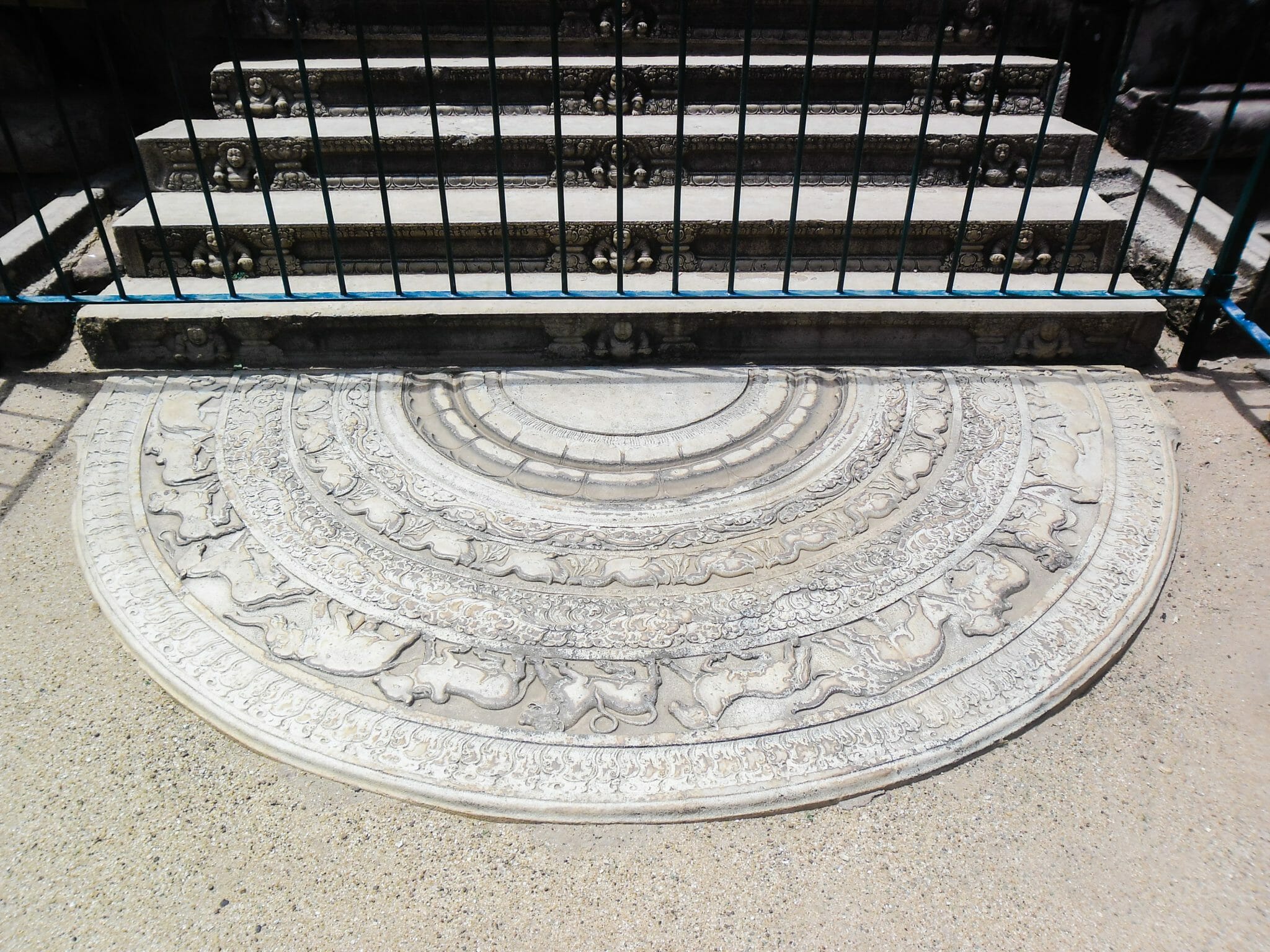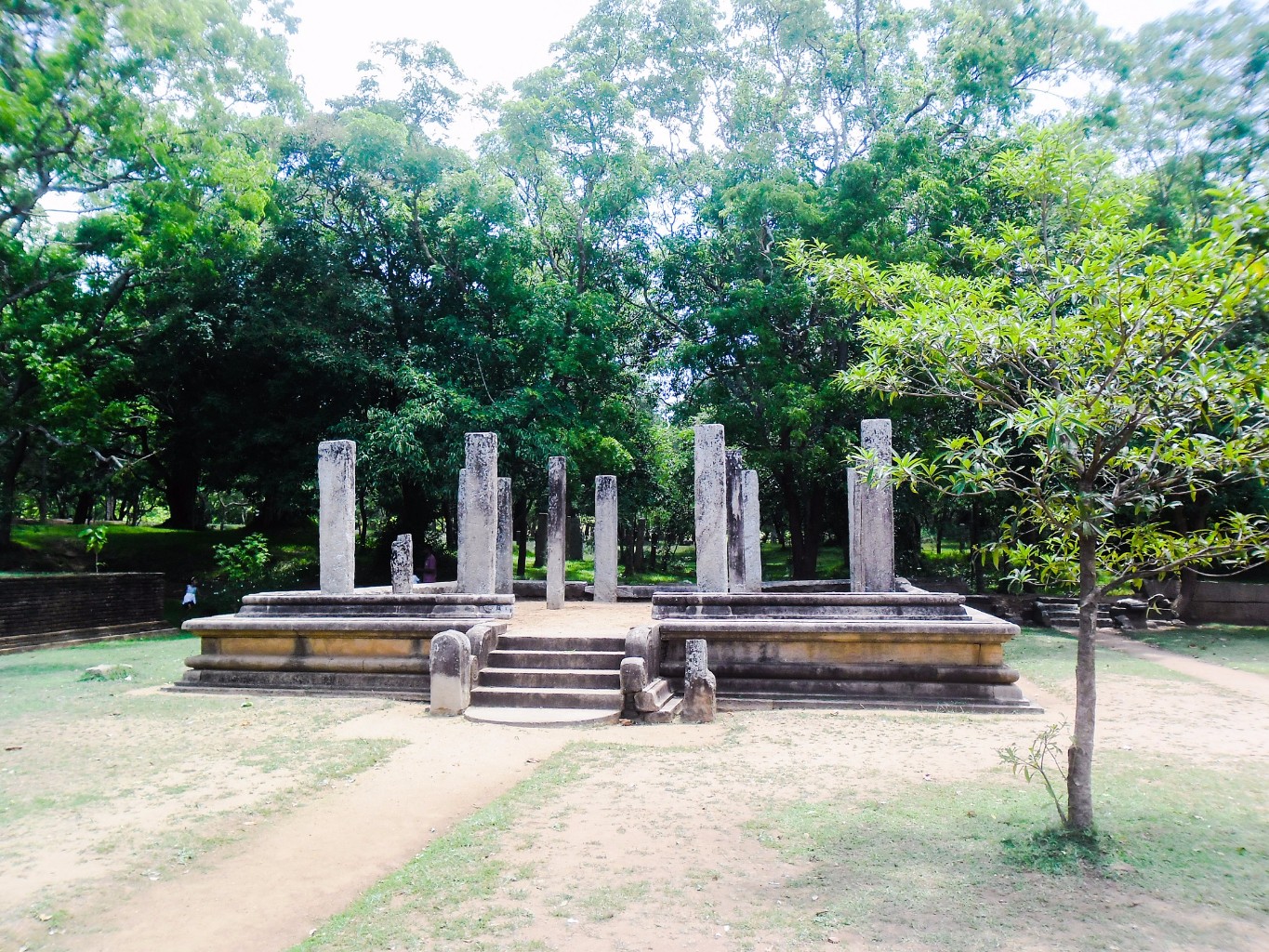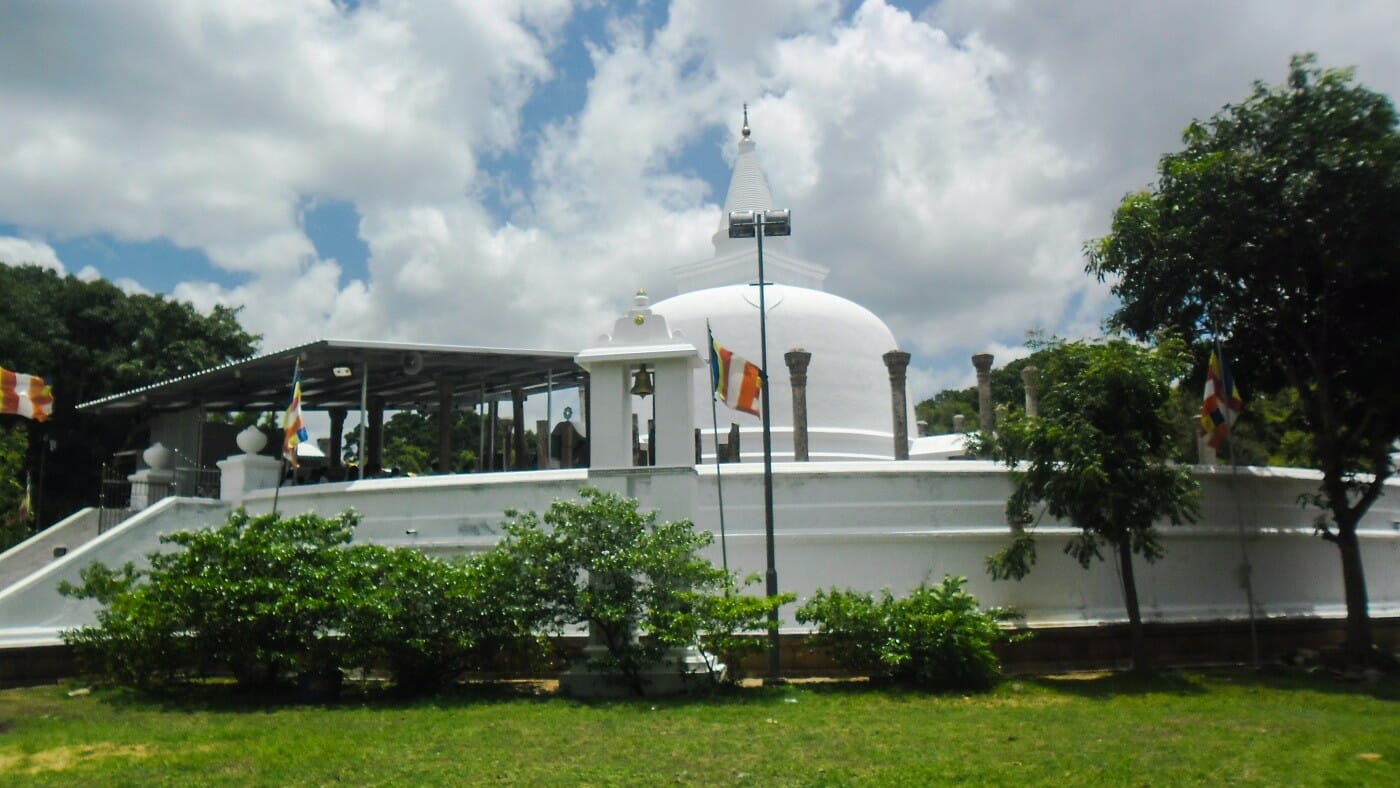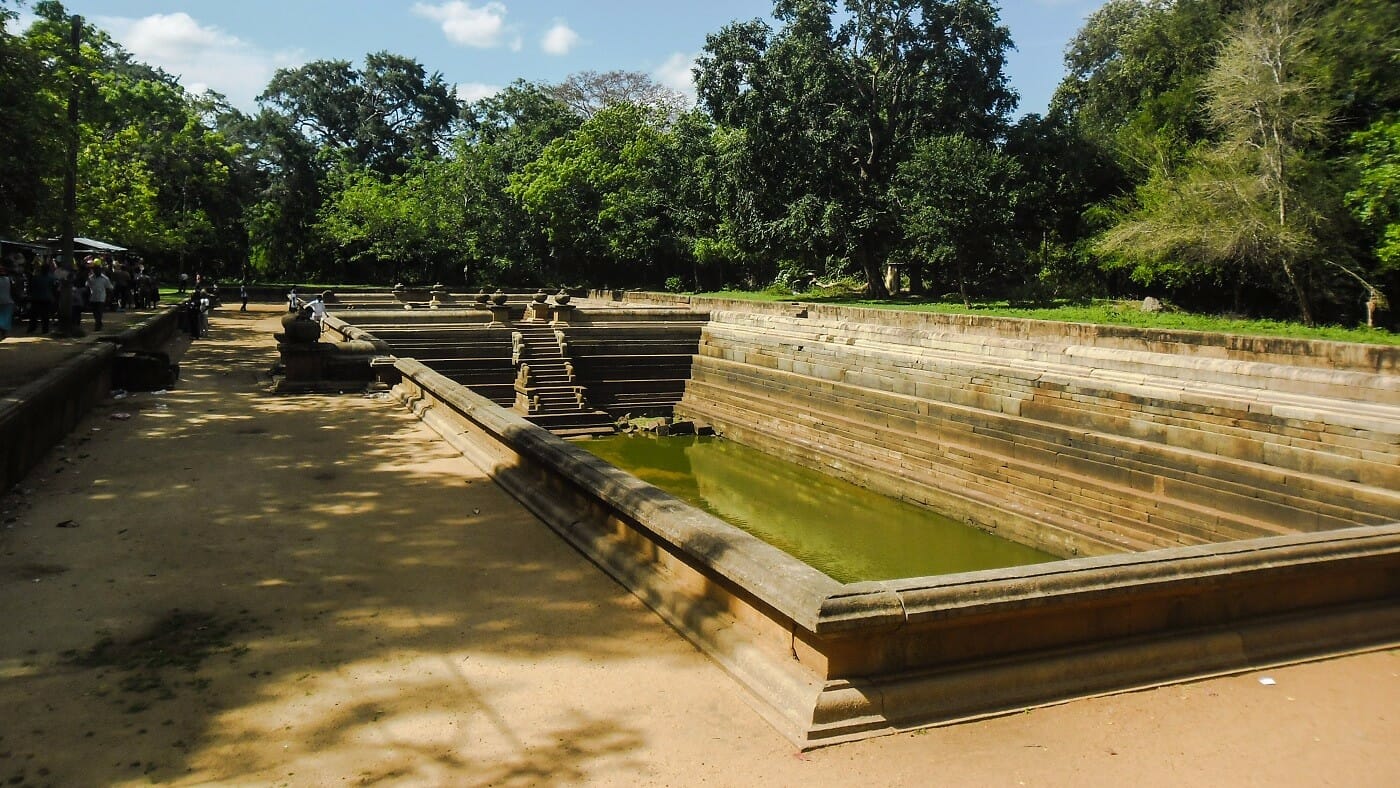
Sandakada Pahana (or Moonstone) is a semi-circular stone slab usually seen at the bottom of staircases of ancient religious places as well as some ancient royal palaces in Sri Lanka. It is a unique creation of ancient Sinhalese architecture. The Moonstone located in Mahasena’s Palace is the finest and best-preserved Moonstone found in Sri Lanka. This palace is located in the Sacred City of Anuradhapura in North Central Province, Sri Lanka.

interpretation
According to historians, the symbols and their arrangement represents a great religious meaning. The widely accepted interpretation was introduced by Prof. Senarath Paranavithana. According to his interpretation,
- The moonstone symbolizes the cycle of Saṃsāra.
- The Liyavel symbolize worldly desires (Taṇhā)
- The lotus depicts the final achievement of Nirvana.
- The elephant, bull, lion, and horse depict birth, decay, disease, and death.
- The swans symbolize the distinction between good and bad.
The moonstone found belongs to the Polonnaruwa period has removed the symbol of the bull. During that period, the Sri Lankan culture was heavily influenced by South Indian customs and traditions due to several invasions. The bull is considered a venerated animal in Hinduism. As such historians believe that the removal of bull from moonstone in the Polonnaruwa period occurred due to this influence.
External Links
Sorry, no records were found. Please adjust your search criteria and try again.
Sorry, unable to load the Maps API.
Share this:
- Click to share on X (Opens in new window) X
- Click to share on Facebook (Opens in new window) Facebook
- Click to share on LinkedIn (Opens in new window) LinkedIn
- Click to share on Reddit (Opens in new window) Reddit
- Click to share on Tumblr (Opens in new window) Tumblr
- Click to share on Pinterest (Opens in new window) Pinterest
- Click to share on WhatsApp (Opens in new window) WhatsApp
- Click to email a link to a friend (Opens in new window) Email












